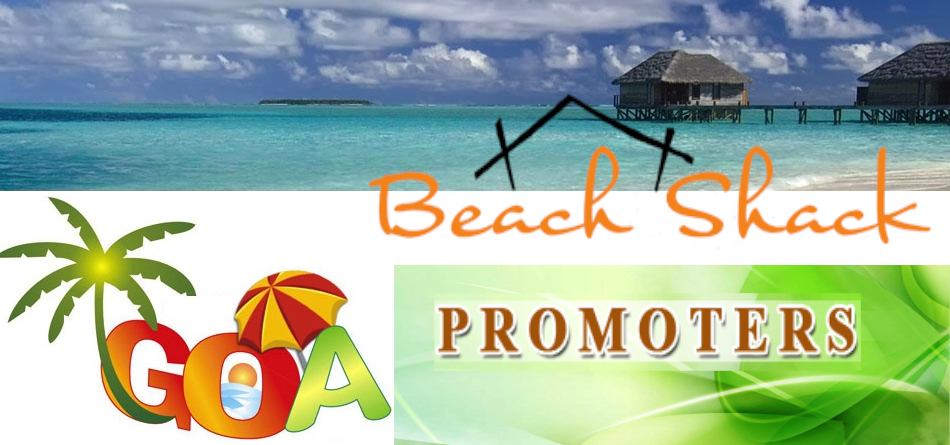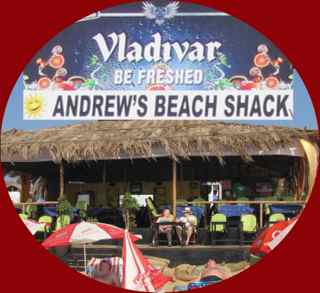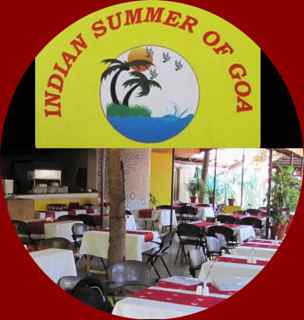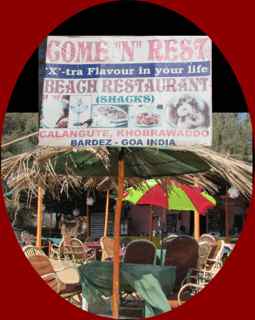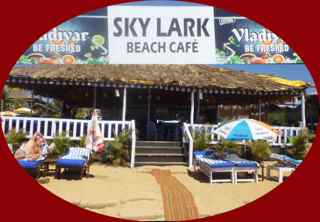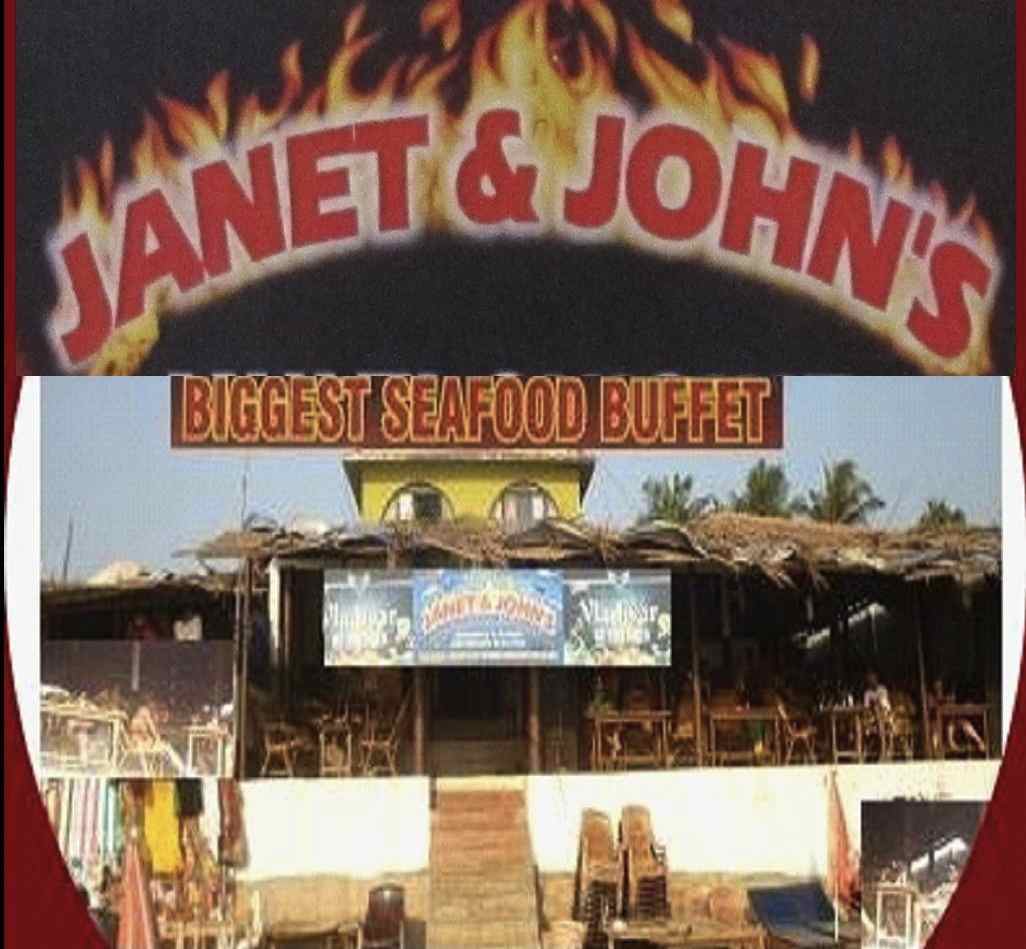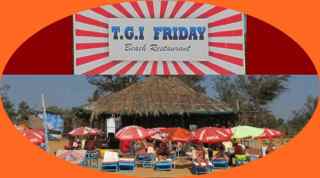Beach Shack Goa Promoters
Our motto “Beach Shack Goa Promoters” is focused to provide the best facilities on the shores of Goa to our clients who have been to the five corners of this world seeking adventure, and take back memories of secret Goan hideouts and beaches, memorable night-parties and all that you have conquered, and everything you've ever set out to do during your holidays in Goa. But what is there at the end of a farmer’s life, that isn't there at the end of that of a king? Live like a king while you can.
You know you deserve
the very best in luxury and
relaxation.
Book a Party at a Beach Shack in Goa
Call Toll Free 0091 80 89 89 7777
Soth GOA
PALOLEM
Palolem is a cosy beach of white sand facing a blue bay between two headlands. The little wooded islands on the northern
headland look alluring and you could try and persuade one of the fishermen — this is also a fishing beach — to ferry you across.
They also offer to take you out to spot dolphins. Tourists have of late discovered Palolem and so there are quite a few shacks
selling seafood snacks, souvenirs and clothes of the bright, informal kind. Panaji, the capital, is more than 70 kms away.
In recent times, Palolem has become famous for its ‘Silent Noise’ parties, a unique concept which does away with loud blaring live
music after the 10 pm ban. With your own set of earphones, you can dance away to different genres of music played by versatile
DJs.
Palolem is just 3 kms away from Canacona Railway station, now on the Konkan Railway route. You can hire taxis and autorickshaws
to reach Palolem beach from Margao, 40 kms away. There are regular buses from Margao to Palolem that drop you
off at Canacona village.
There are now beautiful beach huts and family rooms to choose from in Palolem. Further south is the cove of Colomb where you
can enjoy peace and quiet. Two kilometres away from Palolem is Rajbag Beach which is isolated and stretches all the way to the
mouth of the Talpona River. And then on to Galgibaga Beach which is the second nesting site in Goa for turtles. Further south is
Agonda Beach
AGONDA
If you continue driving towards Panaji from Palolem, the next beach is Agonda.
It’s long and lonely, fringed with palms and casuarinas and dominated by a large hill to the south.
It’s not safe to swim out too far on this beach. There are very few facilities available here and you are needed to carry all the
essentials.
Agonda is a 3 km long beautiful cove of white sand, safely secluded in the palms. There are no tourists, no souvenir stalls, no
restaurants—just peace and tranquility. Just the trees, the beach, the big beautiful ocean and you.
It also makes for a great day trip from Colva and Covelossim. For a real adventure, hire a tent and camp for the night, listening to
the crashing of the sea waves.
Not far from Agonda beach is Cabo de Rama, untouched by most of the visitors in this region. The atmosphere of the fort creates
a sense of history and drama that very few would fail to appreciate. The fort is named after Rama, hero of the Hindu epic
Ramayana. According to local legend, Rama stayed here with his wife Sita during the period of his 12-year exile.
The best way to reach this beach is by a scooter or motors bike.
VARCA, CAVELOSSIM, MOBOR
Varca, Cavelossim and Mabor are a trio of the most alluring beaches south of Benaulim. These beaches are much cleaner and
quieter than most of the other more famous beaches of Goa. There are numerous beach shacks offering a variety of Goan dishes
and seafood at reasonable prices.
There are several food joints around the grand ‘Dona Sylvia’ resort offering a splendid repast at reasonable rates. There are also
facilities for Dolphin watching up the River Sal.
The beaches here are home to some of the most exclusive and luxurious resorts in Goa. Accommodation is also available for
budget and economy class travelers, though not on the beach itself.
There is plenty of transport for these beaches from Margao. From Cavelossim village, Margao is 18 kms away and buses and
autos are available easily. You can also hire taxis from Dabolim Airport (41 – 48 kms) to reach the beach resorts here. To move
locally, use cycles and scooters that are available on hire.
BETALBATIM
North of Colva is Betalbatim Beach which begins a long string of beaches with Majorda, Utorda, Arossim and Velsao at the north.
It is a ten kilometre stretch of white sand which is not very crowded
COLVA (click here for photo)
This is the most important beach in the South circuit, equipped with all modern amenities like air-conditioned resort complexes,
tourist cottages, discos, besides several stalls, eateries and guest houses—all of which have expanded the village enormously.
With 20 kms of virgin white sands, palm fringed, sun drenched beaches, Colva is the most loved beach in Goan. Unlike Anjuna or
Calangute, Colva has gained popularity only lately. Located just 39 kms from the capital Panaji, it was relatively little disturbed
and life moved on quietly.
The Church of Our Lady Of Mercy in Colva is famous for its miracle statue of Menino Jesus. The busy road leading from the
Church to the beach is where all the facilities are located.
While taking a stroll on Colva Beach, silver carpets of mackerels can be seen shimmering and drying on the golden sands.
Fishermen’s motor trawlers huddle in a line offshore. Tourists and locals frequent the beach for a dip or a walk for a change of air
or to sunbathe on the golden sands. The trinket stalls and drink stands on the sands under the moonlight add to the aura of
Colva Beach.
Blessed with white powdery sands, Goa’s longest beach, Colva, is fringed with palms and
Blessed with white powdery sands, Goa’s longest beach, Colva, is fringed with palms and
drenched with the sun. A walk on the beach is full of small delights, where fishermen’s motor
trawlers lie in a line offshore, and tourists in colourful dress throng the beach. Colva at night
with its silvery grey sands glittering in the moonlight make moonlit evenings incredibly
romantic.
MAJORDA
This small stretch, about 5 kms north of Colva Beach, is as pretty as a picture, studded with several hotels, the most prominent
being the starred Majorda Beach Resort.
Majorda is the village where the Jesuits, fond as they were of the good things of life, discovered the best Goan toddy (sap from
the coconut palm), which they used to leaven the bread. Naturally, then, Majorda is the place where the Goans were first trained in
the delicate art of baking European breads. The Majordans are still Goa's best bakers.
The delights of the beach, however, were discovered much earlier, in mythical times. Legend has it that in the Goan version of the
Ramayana, Lord Rama was kidnapped as a child and brought up at Majorda. Later, in pursuit of Sita, he camped at Cabo de
Rama - a headland further south - where the stretch of developed beaches ends.
BOGMALO
This beach, dominated by a 5-star hotel located right on its edge, is cut apart from both the North and South beach circuit. Just
4 kms from the airport at Dabolim, it is a favourite among the elite classes and has an air of exclusivity.
Although the resort hotel towers above the village, there are still a few smaller and appealing places to stay in. Windsurfing and
water skiing facilities are available.
BENAULIM
Less than 2 kms south of Colva is the more tranquil beach of Benaulim, is one of the few places in Goa where one can glimpse
handicrafts typical to this area. The best of the traditional rosewood furniture is made here. Also, mythically Benaulim is famous
as the place where the legendary Parashuram's arrow landed by which Goa was created.
Among the more attractive aspects of Benaulim is that it is still rather undiscovered by domestic tourists even though it is a
fishing beach. It gets fairly crowded in the evenings and on weekends with local visitors who get off buses about a kilometre away
and pour onto the beach.
The Church of St John the Baptist is situated on a hill beyond the village and worth a visit. On the arrival of the monsoon, the
Feast of St John the Baptist (Sao Joao) is celebrated as thanksgiving. Young men wearing crowns of leaves and fruits tour the
area singing for gifts. To commemorate the movement of St John in his mother’s womb and Mary’s visit, the young men of this
area singing for gifts. To commemorate the movement of St John in his mother’s womb and Mary’s visit, the young men of this
village jump into the locals wells in celebration.
BETUL
Betul is an important fishing port where all the mechanized boats and deep sea trawlers bring in their catch. Here headlands from
the slopes of the Western Ghats protrude into the shore, imparting an imposing backdrop.
Beyond this secluded beach is the hill of Cabo De Rama where the Portuguese built a fort. From the fort, a great view of the
sunset on the beach can be viewed. However, there are very few places to stay in Betul.
Situated at the happening Baga beach, Andrews Beach Shack has amazing beach parties with international DJs playing here all the time. It is also a skip away from other nightclubs in Baga. A great shack with friendly staff and good food, Andrews Beach Shack is the place to hang out and watch the sunset with a beer in your hand. It serves Italian, Chinese and Continental and is a perfect place to unwind, sky gaze and listen to good music. The tandoori fish here is to die for. A must-try here are their Bloody Marys and their milkshakes. You can also get a nice foot massage here.
Call 0091 808 909 7777 to book your special table with great offers.
One of Goa’s oldest shacks Indian Summer Of Goa specializes in seafood and traditional Goan cuisine. The prawn curry rice is in great demand along with the masala fried fish and crab xacuti (pronounced ‘shakuti’). Recipes have come down through generations of Indian Summer Of Goa. Call 0091 808 909 7777 to book your special table with great offers.
Known more as a beach bar, Come N Rest Beach Shack is known for its trance and loud electro music through the day. A great place to visit during your visit to Calangute Beach, Come N Rest Beach Shackcaters to the young Russian and Israeli crowd along with Indian tourists.
Book a Party at a Beach Shack in Goa
Call Toll Free 0091 80 89 89 7777
On a cool evening, a walk on the beach can be calming and hard on the legs. Walk into Sky Lark Beach Shack to rest awhile and stay for dinner. Get there early to get a table, because it gets crowded really quickly. They have Goan and Continental food, and both are good, though their Continental style is better than their Goan. The vindaloo with sannas is amazingly spicy. The sannas (Goa’s reply to idlis fluffed with palm toddy) were sweet to counter the spice and soft and fluffy like they’re supposed to be. The fenny here is the cheapest. Try the palm fenny with lemonade. Call 0091 808 909 7777 to book your special table with great offers.
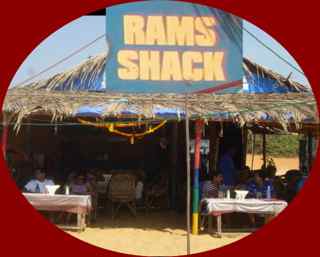
Rams Beach Shack has a long history of catering to global tourists for many, many years. The ‘shack’ has become more like a ‘home away from home’ and is a homecoming for most tourists. The regulars give it an almost local feel throughout the season. Known for its Wednesday night barbeques and Sunday roasts, Rams Beach Shack kitchen offers an amazing range of quality, freshly-prepared food throughout the day. .
Rams Beach Shack, for almost a decade, had the view of the River Princess, a stranded vessel right at the shore and was a
great sight under the moonlight.
Janet and Johns is known for hosting big parties as it has a huge space and a scenic beachside location. In fact, this is more of a lounge and party place, with live music on Fridays when DJs play retro, hip-hop and other genres to pep up the general mood. With the music in full flow, you can dance late into the night. If you aren’t one for a lot of dance, you can have your drink while you nibble on some delicious seafood. The bar is well-stocked and serves perfectly-made cocktails and mocktails. For starters, try their grilled seafood, grilled beef and grilled seafood platter. The beef stew and fish fries here are also classy.
Book a Party at a Beach Shack in Goa
Call Toll Free 0091 80 89 89 7777
TGI Friday is the best shack on Callangute Beach. Both foreign guests and locals love their beef steaks. The Lobster Thermidor is a hot-selling item at this shack. Another delight here is the stuffed avocado and baked crab. There’s pork vindaloo and pork sorpotel which can be addictive. And then there is the wine to give the evening a magical touch at this shack which has a well-stocked bar with the best of liquors and wines. For the
teetotalers, there are mocktails and exotic juices. Tourists come here because of the great food. The queues for tables strangely enough don’t annoy the hungry guests here. Calangute beach is also called the ‘Queen of Beaches’ which was once the land of fishermen. It was later discovered by the hippies in the late 60’s and has now become their haven. Call 0091 808 909 7777 to book your special table with great offers.
Call our Toll Free Number 080 89 89 7777 and book your Table at the shack or Throw A Private Beach Party.
Private Beach Party right on the Beach Call our Toll Free Number 080 89 89 7777
Self Driven Cars in Goa visit www.RentAcarGoa.com

